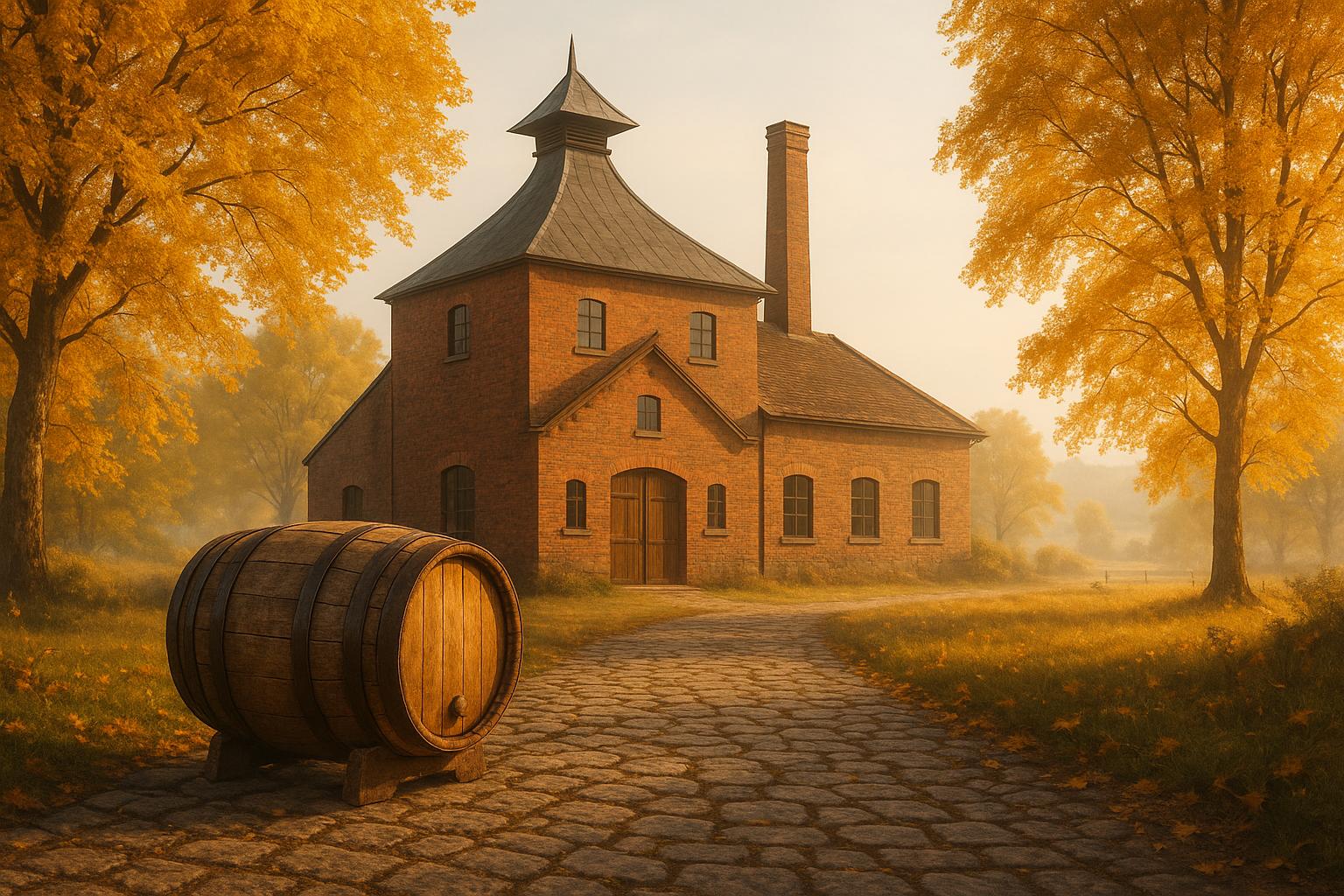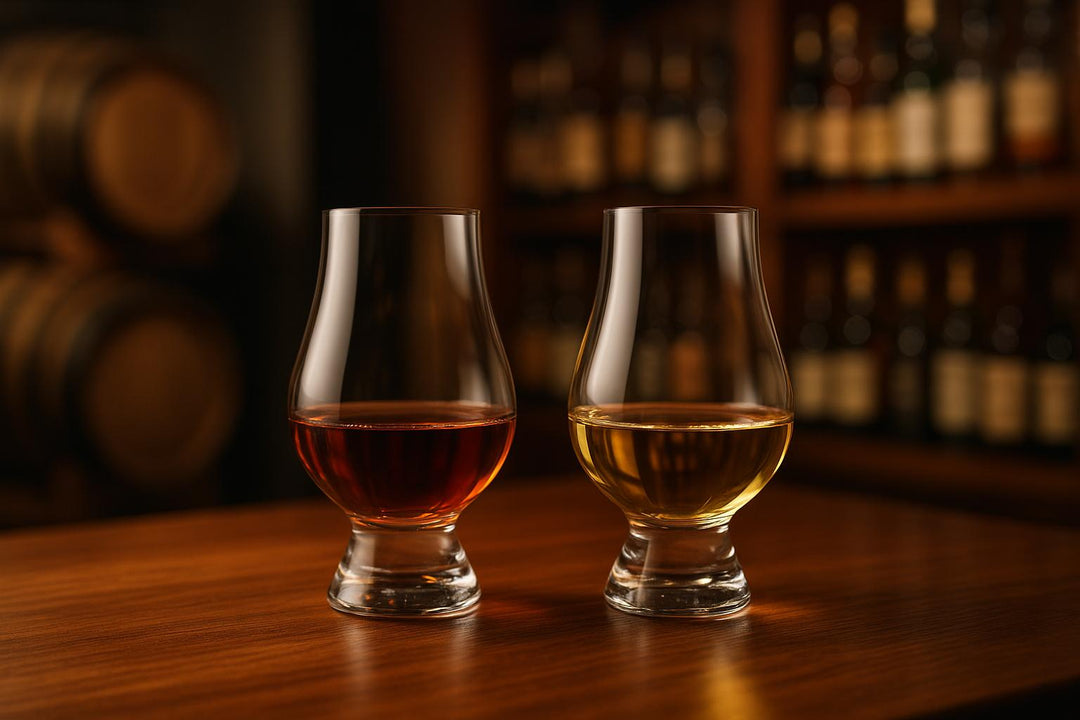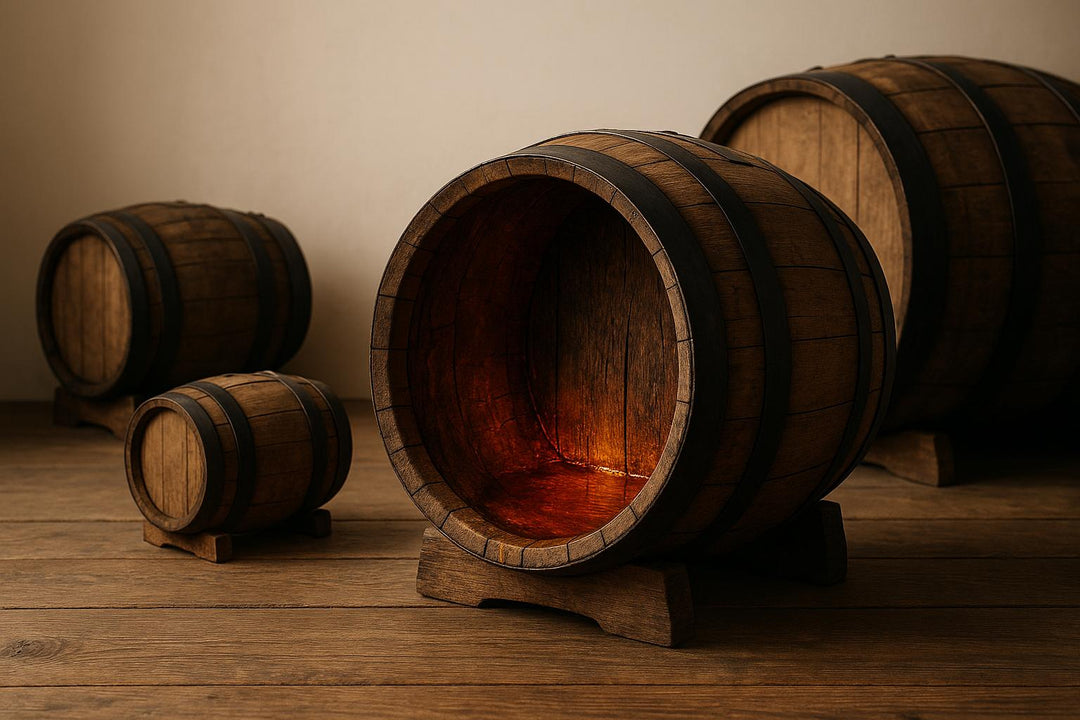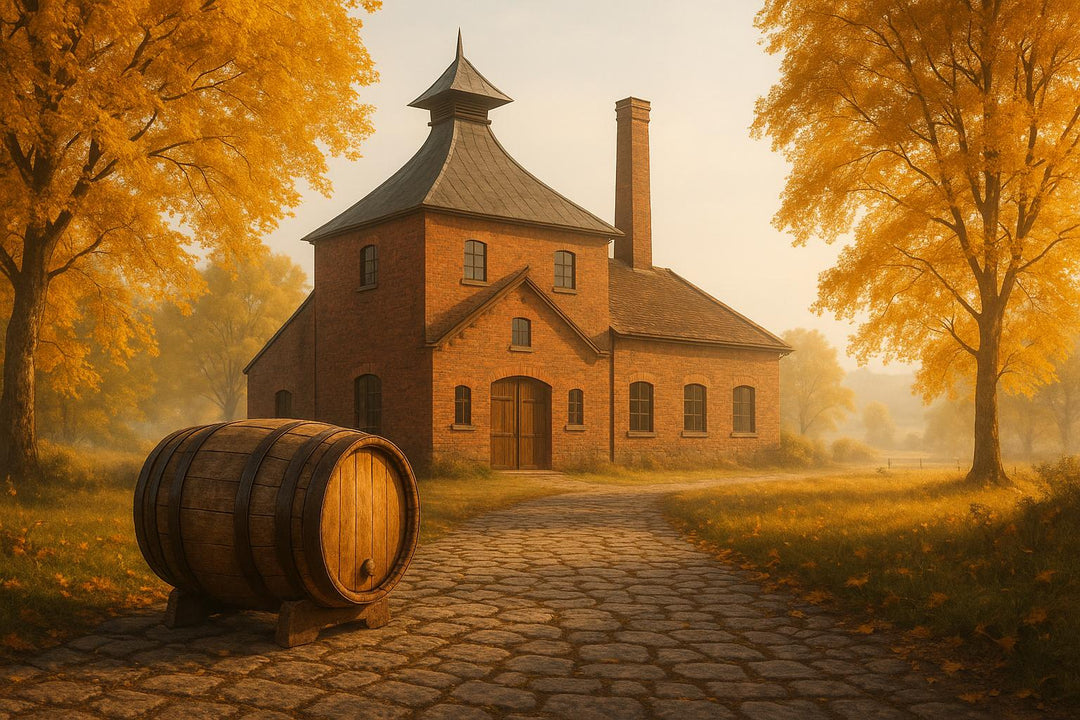Canadian whisky is one of the world’s four major whisky styles, known for its smoothness and global appeal. With over 17.5 million 9-litre cases sold annually and a strong foothold in the United States (accounting for 75% of exports), it reflects centuries of expertise and innovation in distilling. Its roots trace back to the late 18th century, evolving from surplus grain distillation by farmers to large-scale production by pioneers like John Molson, Hiram Walker, and Gooderham and Worts.
Key highlights:
- Origins: Began in Quebec in the 1760s, shifting from rum to whisky due to grain abundance and wartime shortages.
- Regulations: Canada led whisky standards with a minimum 2-year ageing law in 1890, later raised to 3 years.
- Production Style: Unique blending after maturation, unlike American whiskies, and flexible barrel ageing rules.
-
Regional Impact:
- Quebec: Historical starting point, now home to artisanal producers.
- Ontario: Industrial hub, producing globally recognised brands like Crown Royal.
- Alberta: Known for rye whiskies with bold, spicy profiles.
- British Columbia: A leader in craft whisky experimentation.
From Prohibition-era smuggling to modern premium offerings like Crown Royal Northern Harvest Rye, Canadian whisky has grown into a respected global spirit. Its diversity and resilience, shaped by geography and climate, continue to influence whisky-making worldwide.
Canadian Whisky Explained in 3 Minutes
Evolution of Canadian Whisky Regions
The story of Canadian whisky is deeply intertwined with the geography, resources, and shifting tastes of its regions. Over time, these factors have shaped distinctive production techniques and flavours, giving each province its own whisky identity. As the industry evolved from rum to whisky, regional conditions played a key role in defining these unique characteristics.
From Rum to Whisky: The Shift in Production
In the early days, rum was the spirit of choice, especially in Atlantic Canada. This was largely due to the region’s connection to the British sugar trade, with molasses arriving regularly from Caribbean colonies [1]. However, as settlers moved inland to Quebec and Ontario, the economics of production began to change. Transporting molasses became costly, while the interior regions offered an abundance of cheap, locally grown wheat [4][9].
A pivotal moment came in 1801 when John Molson transitioned from rum to whisky production. This shift was driven by wartime shortages during the Napoleonic Wars, which disrupted the supply of French wine and brandy to England, creating a new demand for Canadian whisky [1].
Ontario quickly became a whisky powerhouse. Gooderham and Worts, for example, began as a wheat milling operation in 1837 but soon turned to whisky production to make use of surplus grain. By the 1850s, their output had surpassed that of Molson’s, and they expanded into what is now Toronto’s historic Distillery District [1].
These developments established Quebec as a pioneer in commercial whisky production, while Ontario became the hub for large-scale operations. Meanwhile, Alberta and British Columbia later emerged as centres for rye and craft whisky production, adding new dimensions to Canada’s whisky landscape.
Role of Geography and Climate
Canada’s diverse geography and extreme climates have a profound impact on whisky production. Unlike other whisky-producing nations, Canada’s distillers face unique challenges - and opportunities - thanks to the country’s vast landscapes and dramatic weather variations.
Climate extremes, in particular, influence the maturation process. At Eau Claire Distillery in Turner Valley, Alberta, located at an elevation of about 1,200 metres, the effects of temperature swings are striking. David Farran, President of Eau Claire Distillery, explains:
"We do no temperature control of our warehouses, and we live in this wacky climate that can go from -22°F to 50°F in a single day. Coupled with our altitude, the result is that we actually lose more water than alcohol in our angels' share." [8]
This combination of altitude and rapid temperature changes often leads to water loss exceeding alcohol loss during maturation, with annual spirit losses reaching up to 8% in some cases [8]. Coastal distilleries face their own challenges. For instance, Shelter Point Distillery on Vancouver Island contends with the effects of a maritime climate, where heavy rainstorms can wipe out half a crop in one season [8].
Whisky expert Davin de Kergommeaux highlights the subtle influence of local conditions:
"Regional character or terroir no, but there are some distilleries whose house styles are distinct in part because they use local grains and the flavour of these is very much climate dependent" [10].
These geographical factors have inspired remarkable innovation. At Eau Claire Distillery, grains are grown using antique horse-drawn equipment, imparting unique qualities to their whiskies [10]. Shelter Point in British Columbia produces a variety of expressions - single malt, single grain, and blends - using grain grown on the same farm as the distillery [10]. Even Yukon Brewing in Whitehorse creates its Two Brewers single malt whiskies using specialised beer malts [10].
Some distillers see the accelerated maturation caused by extreme climates as an advantage. Graeme Macaloney, founder of Macaloney's Caledonian Distillery, recalls advice from the late Jim Swan:
"(Late distilling legend) Jim Swan said to me, 'Don't worry about the angels' share, because it works out in greater maturity at a younger age.'" [8]
This approach has become a defining feature of Canadian whisky, with over 300 craft distillers now contributing to the country’s diverse whisky scene [10]. These challenges, far from being obstacles, have driven creativity and resilience, shaping a whisky tradition that thrives on the uniqueness of its environment.
Major Canadian Whisky Regions
Canada's whisky scene is a rich mosaic of history, geography, and craftsmanship. Each province brings something distinct to the table, shaped by its own traditions, resources, and innovations. From Quebec's historic roots to Ontario's industrial dominance, and from Alberta's rye-focused expertise to British Columbia's bold craft distilleries, these regions together have carved out Canada's place on the global whisky map.
Quebec: Where Canadian Whisky Began
Quebec holds a special place in Canadian whisky history. During the Prohibition era in the United States, Quebec's distilleries became key suppliers, solidifying the province's role in the North American spirits trade [11].
Historic distilleries like Beaupré and LaSalle helped establish Quebec's whisky credentials [11]. Today, the province is experiencing a revival, with artisanal distilleries embracing local ingredients [13]. Many modern producers incorporate flavours like maple and apple, creating whiskies that reflect Quebec's agricultural roots. This blend of tradition and innovation ensures Quebec remains a cornerstone of Canadian whisky.
While Quebec laid the groundwork, Ontario took whisky production to an industrial scale.
Ontario: The Powerhouse of Canadian Whisky
Ontario became the industrial hub of Canadian whisky, thanks to its strategic location near the United States and access to abundant water supplies. Pioneers like Hiram Walker and William Gooderham set up operations here, with Walker’s Windsor distillery, established in 1857, becoming a hallmark of barrel-aged whisky craftsmanship [11][2].
Ontario's whisky heritage lives on through distilleries like Walkerville, Canadian Mist, and Kittling Ridge [11]. Known for their rich, full-bodied whiskies, Ontario producers have played a significant role in Canadian whisky's international success. By 2018, over half of all whisky sales in the United States were attributed to Canadian brands [3], with Ontario leading the charge. In 2015, Ontario's Hiram Walker whisky, Crown Royal Northern Harvest Rye, was named World Whisky of the Year by Jim Murray in his Whisky Bible [2].
Alberta and British Columbia: Pioneers in Rye and Craft Whisky
Western Canada has become a hotbed of innovation, particularly in rye and craft whisky. Alberta's prairies and foothills offer ideal conditions for growing grains, with clean water sourced from the Rockies [11]. The region is renowned for its high-rye whiskies, which are celebrated for their bold, spicy character. Alberta’s unique climate also speeds up the ageing process, resulting in whiskies with distinct spice-forward profiles [11][13].
Meanwhile, British Columbia is pushing boundaries with its craft whisky scene. The province's varied geography and climate inspire distilleries to experiment with bold, unconventional expressions [13]. As a newer player in the whisky world, British Columbia reflects the growing trend of smaller producers making a big impact.
Together, these regions showcase the breadth of Canadian whisky. From large-scale production to craft innovation, each province adds its own flavour to the nation's whisky story. As Barry Stein, owner of Still Waters, aptly puts it:
"With our history, Canadian whisky should be a blend" [12].
This philosophy captures the essence of Canadian whisky - a harmonious blend of regional styles and traditions, each contributing something unique to the whole.
Key Moments in Canadian Whisky History
Canadian whisky has a rich history shaped by regional diversity and transformative events that propelled it onto the global stage. Over the years, key turning points have redefined its identity and established the foundation for today's thriving industry.
Impact of Prohibition and Cross-Border Trade
The American Prohibition era (1920–1933) was a game-changer for Canadian whisky. While the United States grappled with the Volstead Act, banning alcohol production and sale, Canadian distillers seized the opportunity to meet the enormous demand for whisky from their southern neighbours. This period not only expanded the scale of the industry but also elevated its international reputation.
By May 1923, an estimated 378,000 litres of whisky were smuggled into Michigan every day [6]. This surge in illicit trade transformed small-scale producers into major operations. A key figure in this transformation was Samuel Bronfman, founder of Distillers Corporation Ltd. Bronfman acquired the Nelson's Green Brier distillery in Kentucky, dismantled it, and reassembled it in Ville LaSalle, Quebec, to produce whisky tailored for the American market. In 1928, his company merged with Joseph E. Seagram & Sons, creating one of Canada’s largest whisky enterprises [14]. Bronfman cleverly blended lower-cost Quebec whisky with imported premium spirits, branding it as "Highland whisky", which appealed to American tastes.
Smuggling operations during Prohibition became legendary. Harry Hatch, owner of Hiram Walker, famously employed a group of fishermen, nicknamed "Hatch's Navy", to ferry whisky across Lake Ontario to American bootleggers [15]. These operations required precise logistics, significant investment, and strategic planning, which elevated the Canadian whisky industry to new heights.
The scale of this trade was staggering. In 1929, US border agents confiscated 16,594 cases of Canadian whisky, though they admitted this represented less than 10% of the total being smuggled [6]. A Philadelphia Inquirer headline from May 1923 captured the magnitude of the situation:
"Enforcement Agents Frankly Assert Inability to Curb Traffic Which is Making Millionaires Daily and Floats Entire Middle West With Wet Goods to be Resold at Fabulous Prices" [6].
The lighter, smoother style developed by Canadian distillers during this period to cater to American palates left a lasting influence on whisky preferences in the United States. These transformative years laid the groundwork for the industry's evolution and eventual resurgence.
Modern Resurgence and Premium Market Growth
Fast-forward several decades, and Canadian whisky underwent a renaissance beginning in the 1990s. After years of being seen as a "smooth but forgettable" spirit, distillers began to reimagine what Canadian whisky could be, ushering in a new era of premium offerings.
This shift was spearheaded by John K. Hall, who founded Forty Creek in the 1990s. Hall broke away from the industry's norms, focusing on bold, oak-aged rye and barley whiskies that highlighted the complexity of Canadian whisky. Releases like Confederation Oak and Port Wood Reserve caught the attention of whisky enthusiasts and proved that Canadian whisky could stand shoulder to shoulder with premium Scotch and American bourbons [16].
The craft distilling boom of the 2000s further fuelled this premium movement. Small-batch and single-cask whiskies from both heritage brands and new distilleries began pushing boundaries. The launch of the Canadian Whisky Awards in 2010 provided a platform to celebrate excellence and creativity in the industry [16].
A pivotal moment came in 2015 when Crown Royal's Northern Harvest Rye was named "Whisky of the Year" by Jim Murray in his Whisky Bible [17]. This accolade not only shocked the global whisky community but also cemented Canadian whisky's place on the world stage.
Behind the scenes, innovation and research played a crucial role. Dr. Don Livermore at Hiram Walker led the charge with scientific approaches to whisky-making, resulting in award-winning releases like Lot 40, Red Letter, and Gooderham & Worts [17]. As Livermore explained:
"Canada's the perfect place to adapt to those people's ever-changing taste, since the regulations were set up to give us the adaptability to make what consumers are looking for" [17].
In recent years, the premium whisky market has continued to grow. In 2024, Paradigm Spirits' 19-year-old Heritage Collection earned top honours at a major competition, becoming a must-have for collectors [16]. Today, Canadian whisky sells approximately 17.5 million cases annually worldwide, with increasing interest in age-stated, cask-strength, and specialty-finished whiskies [16].
Collectors have also taken notice. Vintage Canadian whiskies and rare editions now fetch high prices, reflecting a newfound appreciation for the quality and heritage of these spirits. As whisky expert Davin de Kergommeaux observed:
"Canadian whisky is a real, genuine bargain, not because it's inexpensive, but because it's good value for money" [17].
This resurgence has transformed Canadian whisky from a mass-market mixer into a premium spirit that commands the respect of connoisseurs worldwide. By blending innovation with tradition, the industry continues to thrive, solidifying its place among the most celebrated spirits globally.
sbb-itb-128d6c1
Lasting Legacy and Global Influence
Canadian whisky, with its rich regional diversity, has carved out a legacy that reaches far beyond Canada’s borders. Its unique traditions continue to shape whisky production globally, connecting enthusiasts around the world through shared appreciation and expanding distribution networks.
Global Reach and Whisky Collecting
As one of the four major whisky styles recognised worldwide, Canadian whisky has made its mark on the global stage. The premium whisky market has seen impressive growth; in the United States, whisky sales rose by 7% between 2011 and 2016, with the high-end premium category soaring by an astonishing 112% during the same period [18].
In the UK, The Really Good Whisky Company plays a key role in bringing Canadian whisky to collectors. By offering rare, aged bottles, bespoke bottling services, and custom labels, they connect Canada’s innovative distillers with whisky enthusiasts across the globe.
Canadian craft distilleries have also gained attention for their limited-edition releases, which are highly prized by collectors. Whisky expert Davin de Kergommeaux summed up this growing recognition perfectly:
"The whisky world is waking up to Canadian whisky and declaring it among the best whiskies in the world" [18].
Beyond its appeal to collectors and its growing sales, Canadian whisky also holds a special place in culinary and social traditions.
Impact on Food and Society
Canadian whisky’s influence extends beyond the glass, shaping both food culture and social life. Thanks to Canada’s flexible production regulations, distillers can create a wide range of whisky expressions that pair beautifully with diverse cuisines. This versatility has made it a favourite ingredient for bartenders and chefs alike.
Dr. Don Livermore, Master Blender at Hiram Walker & Sons Limited, highlighted this adaptability:
"Canadian whisky is the most innovative, creative and adaptable style whisky there is" [18].
From its role in Prohibition-era drinking habits - when it made up about 10% of all alcohol consumed in the United States [18] and outsold bourbon from the Civil War until 2010 [7] - to its modern presence in distillery visitor centres and tasting rooms, Canadian whisky has left an indelible mark on drinking traditions.
In 2018, Canadian brands accounted for more than half of all whisky sales in the United States [3]. With around 280 distilleries across Canada - 100 of which produce whisky [5] - the industry strikes a fine balance between honouring its heritage and embracing innovation. This duality serves as a model for whisky regions around the world.
Conclusion: Celebrating the Legacy of Canadian Whisky
Canadian whisky's journey, shaped by centuries of craftsmanship and forward thinking, continues to leave its mark on the global whisky scene. As one of the four recognised global whisky styles[4], it has earned a place of respect among enthusiasts and collectors worldwide.
The numbers speak for themselves. Take Crown Royal, for instance - it's consistently ranked among the top 20 best-selling whiskies around the globe[19]. Meanwhile, The Hiram Walker Distillery in Windsor, Ontario, holds the title of the largest distillery in North America[19]. These achievements underscore the industry's impressive reach and influence.
One of Canadian whisky's defining characteristics is its regulatory flexibility, which has encouraged creativity while maintaining its signature smoothness and subtle sweetness[2]. This inventive spirit is evident in the rise of craft distilleries, which are introducing bold, diverse styles to captivate whisky enthusiasts. A prime example? In 2024, Paradigm Spirits' 19-year-old Heritage Collection took home top honours at the Canadian Whisky Awards, instantly becoming a coveted item for collectors[16].
Blending has long been a cornerstone of Canadian whisky production, with companies like Seagram's setting global benchmarks for consistency in flavour profiles[5]. For collectors, the scene has never been more exciting. With over 300 distilleries operating across Canada today[16], the options range from heritage brands offering premium releases to craft producers specialising in small-batch, single-cask expressions. The growing focus on bolder rye and barley whiskies, often aged longer in oak and labelled with detailed age statements or cask strengths, has created a dynamic and rewarding market for connoisseurs[16].
Canadian whisky's legacy is a harmonious mix of tradition and innovation. As global interest in these unique expressions continues to grow[3], the influence of Canada’s whisky regions is set to resonate with enthusiasts for years to come.
For those eager to explore this rich heritage, The Really Good Whisky Company presents a thoughtfully curated selection that celebrates both the history and the future of Canadian whisky.
FAQs
How does Canadian whisky differ from other popular whisky styles?
Canadian whisky stands out for its light, smooth, and easy-going flavour, typically crafted from a blend of grains. Expect hints of vanilla, caramel, and fruit, rounded off with a softer finish compared to other whisky styles. By law, it must be aged for at least three years, often in small barrels, and can include added flavourings or caramel to maintain consistency.
On the other hand, Scotch whisky is often recognised for its smoky, peaty character, while Irish whiskey is known for its triple distillation process, which gives it a particularly smooth texture. Japanese whisky, influenced by Scotch, is celebrated for its balance and intricate flavour profiles. Canadian whisky also permits a higher maximum distillation proof than bourbon, contributing to its signature lightness.
These differences make Canadian whisky an intriguing choice for those looking to explore a distinct whisky experience, setting it apart from its global counterparts.
How does Canada’s geography and climate shape the flavour and ageing process of its whiskies?
Canada's geography and chilly climate have a profound impact on the character of its whiskies. The cold slows down the ageing process, meaning the whisky interacts more gently with the oak barrels. Yet, the dramatic seasonal temperature swings - freezing winters and warmer summers - cause the wood to expand and contract. This natural process allows the whisky to draw unique flavours from the barrel as time passes.
The result? A whisky that matures slowly but gains a smooth, balanced profile with layers of subtle complexity. Thanks to Canada's environment, its whiskies carry a distinctive flavour that mirrors both the country's varied climate and its rich whisky-making traditions.
How did Prohibition in the United States influence the Canadian whisky industry?
Prohibition's Impact on Canadian Whisky
When Prohibition swept across the United States between 1920 and 1933, it left a noticeable mark on the Canadian whisky industry. With American distilleries forced to cease operations, the demand for whisky skyrocketed south of the border. Canadian producers quickly stepped in to meet this demand, with whisky being smuggled into the U.S. in massive quantities. This illicit trade not only kept whisky flowing but also established lasting trade routes and significantly boosted production.
This era didn’t just bolster the industry; it solidified Canada's place on the global whisky map. Even today, the influence of this period lingers, reflected in the continued global appreciation of Canadian whisky by enthusiasts everywhere.







Leave a comment